MCQ ON PHLOEM / COMPLEX TISSUE /PERMANENT TISSUE class 11 for NEET | PHLOEM / COMPLEX TISSUE / PERMANENT TISSUE class 11| MCQ PHLOEM / COMPLEX TISSUE / PERMANENT TISSUE with Answer | Check the below NCERT MCQ question for class 11Biology based on the with Answers.
MCQ on PHLOEM / COMPLEX TISSUE / PERMANENT TISSUE class 11Biology with answers were prepared based on the latest pattern.We have provided class 11 Biology MCQs question with Answers to help students understand the concept very well.
MCQ ON PHLOEM / COMPLEX TISSUE / PERMANENT TISSUE is useful for NEET / CSIR / UGC / CBSE / ICSE / AIIMS / EXAM / AFMC EXAM / STATE LEVEL MEDICAL EXAM/ KVS PGT BIOLOGY / NVS PGT BIOLOGY EXAM 2023-2024 ,2025
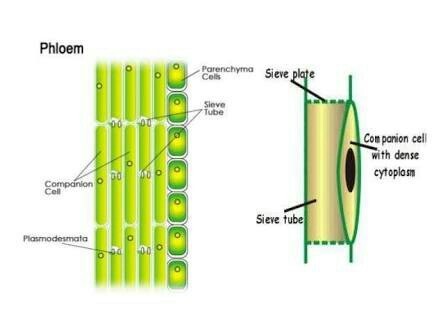
MCQ ON PHLOEM / COMPLEX TISSUE /PERMANENT TISSUE class 11 for NEET
INTRODUCTION:-
PHLOEM / COMPLEX TISSUE / PERMANENT TISSUE :-
THE COMPLEX TISSUES ARE MADE OF MORE THAN ONE TYPE OF CELLS.
THIS WORK TOGETHER IS A UNIT.
Xylum and phloem constituent the complex tissues in plants.
. PHLOEM :- PHLOEM transports food materials, usually from leaves to other parts of the plants. Phloem in angiosperm is composed of Sieve tube elements, companian cells, phloem parenchyma, and phloem fibres.
Gymnosperms have albuminous cells and sieve cells .They lacks sieve tubes and companion cells.
Sieve tubes elements are also long tube like structures arranged longitudinally and are sieve – like manner to form the sieve plates.
Companion cells :- The companion cells are specialised parenchymatous cells which are closely associated with sieve tubes elements.
PHLOEM Parenchyma :- It is made up of elongated tapering cylindrical cells which have dense cytoplasm and nucleus.
PHLOEM fibers:- it is made up of sclerenchymatous cells.There are generally absent in the primary phloem but are found in the secondary phloem.
XYLEM:-
XYLEM FUNCTION is a conducting tissue for water and minerals from roots to the stem and leaves . It also provides mechanical strength to the plants.
It is composed of four different kinds of elements , tracheids, vessels, xylem fibres , xylem parenchyma.
Gymnosperms lacks vessels in their xylem.
Tracheids are elongated or tube like cells with thick and lignified walls and tapering ends.
These are dead and are without protoplasm.The inner layers of cell walls have thickening which vary in form.
Vessel is along cylindrical tube like structure made of many cells called vessels members each with lignified walls and a large central cavity.
Xylem fibers have highly thickened walls and obliterated central lumens.
XYLEM parenchyma cells are living and thin walled and their cell walls are made up of cellulose.
They store food materials in the form of starch or fat .
The cells of the permanent tissues do not generally divide further. Permanent tissue having all cells similar in structure and functions are called simple tissues.
Permanent tissues having many different types of cells are called complex tissues.
Simple tissues:-a simple tissue is made of only one type of cells. The various simple tissues in plants are parenchyma, collenchyma and Sclerenchyma.
Parenchyma forms the major component within organs. The cells of the parenchyma are generally isodiametric.
They may be spherical , oval , round ,polygonal or elongated in shape.
Their walls are thin and made of cellulose.
They may either be closely packed or have small intercellular spaces.
The Parenchyma performs various functions like photosynthesis storage and secretion.
Collenchyma:-the Collenchyma occurs in layers below the epidermis in dicotyledonous plants.
It is found either as a homogeneous layer or patches.It consist of cells which are much thickened at the corners due to deposition of cellulose , hemicellulose and pectin.
Sclerenchyma:- it consist of long narrow cells with thick and lignified cell walls having a few or numerous pits.They are usually dead and without protoplasts.
MCQ PHLOEM / COMPLEX TISSUE/ PERMANENT TISSUE class 11 for NEET/KVS PGT BIOLOGY / NVS PGT BIOLOGY EXAM 2023-2024,2025
1. The permanent complex tissue transports food materials usually from leaves to other parts of the plant.
(a) xylem
(b) phloem
(c) parenchyma
(d) collenchyma
Ans (b) phloem
2. Phloem in angiosperms is composed of
(a) tracheids, vessels , xylem parenchyma , xylem fibres.
(b) tracheids, protoxylem, metaxylem , vessels
(c) tracheids, vessels , xylem Parenchyma ,sclereids
(d) sieve tube elements , companion cells , phloem parenchyma and phloem fibres.
Ans. (d) sieve tube elements, companion cells, phloem parenchyma and phloem fibres.
3. Gymnosperms have ….
(a) albuminous cells
(b) sieve cells
(c) both a and b
(d) sieve tubes
Ans. (c) both a and b
4. Gymnosperms lacks
(a) both b and c
(b) companion cells
(c) sieve tubes
(d) all of these
Ans.(a) both b and c
5. The phloem tissues are long tube like structures arranged longitudinally and are associated with companion cells.
(a) tracheids and vessels
(b) tracheids and xylem parenchyma
(c) vessels and xylem fibers
(d) sieve tubes elements
Ans.(d) sieve tubes elements
6. Which phloem tissues possess a mature a peripheral cytoplasm and a large vacuole but lacks a nucleus.
(a) companion cells
(b) phloem fibres
(c) A mature sieve elements
(d) phloem parenchyma
Ans.(c) a mature sieve elements
7. The functions of sieve tubes are controlled by the nucleus of
(a) companion cells
(b) vessels
(c) xylem fibers
(d) tracheids
Ans.(a) companion cells
8. The sieve tube elements and companion cells are connected by
(a) xylem parenchyma
(b) xylem fibres
(c) pit fields
(d) vessels
Ans.(c) pit fields
9.Which tissue help in maintaining the pressure gradient in the sieve tubes?
(a) parenchyma
(b) Collenchyma
(c) Sclerenchyma
(d) companion cells
Ans. (d) companion cells
10. Which phloem tissues is made up of elongated , tapering cylindrical cells which have dense cytoplasm and nucleus.
(a) parenchymatous cells
(b) collenchyma
(c) phloem parenchyma
(d) all the above
Ans. (c) phloem parenchyma
11.Which phloem tissues stores food material and other substances like resins , latex and mucilage ?
(a) parenchyma
(b) tracheids
(c) phloem parenchyma
(d) phloem
Ans.(c) phloem parenchyma
12.Which are generally absent in most of the monocotyledonous ?
a) monocotyledonous
b) dicotyledonous
c) both a and b
(d) xylem parenchyma
Ans . (a) monocotyledonous
13. Phloem fibres are made up of
(a) sclerenchymatous cells
(b) tracheids
(c) both a and b
(d) endarch
Ans.(a) sclerenchymatous cells
14.Which are generally absent in primary phloem and but are found in the secondary phloem.
(a) metaxylem
(b) protoxylem
(c) phloem fibres
(d) parenchyma
Ans. (c) phloem fibres
ALSO READ:-
● YOU CAN WATCH BIOLOGY SIR Youtube channel
15. Which tissues of jute , flax and hemp are used commercially?
(a) phloem fibres.
(b) endarch
(c) Collenchyma
(d) all the above
Ans.(a) phloem fibres
16. The first formed primary phloem consists of narrow sieve tubes and is referred to as
(a) exarch
(b) endarch
(c) Collenchyma
(d) protophloem
Ans.(d) protophloem

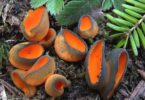
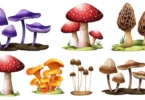
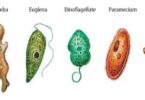
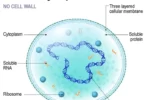
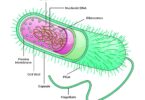
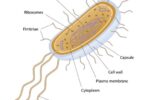
Leave a Comment